15 years one-stop China custom CNC machining parts factory
 165 |
Published by VMT at Jul 13 2022
165 |
Published by VMT at Jul 13 2022
Process Knowledge of Aluminum CNC Machining Parts
Aluminum is the most widely used and widely used metal material in non-ferrous metals, and its application range is still expanding. There are more than 700,000 kinds of aluminum parts produced by using aluminum materials. Today, Xiaobian will introduce to you the process of aluminum CNC machining parts and how to avoid CNC machining deformation.
The advantages and characteristics of aluminum are as follows:
1. Low density. The density of aluminum is about 2.7 g/cm3. Its density is only 1/3 that of iron or copper.
2. High plasticity. Aluminum has good ductility and can be made into various products by pressure processing methods such as extrusion and stretching.
3. Corrosion resistance. Aluminum is a highly negatively charged metal, and a protective oxide film will be formed on the surface under natural conditions or anodizing, and it has much better corrosion resistance than steel.
4, easy to strengthen. Pure aluminum is not very strong, but it can be increased by anodizing.
5. Easy surface treatment. Surface treatments can further enhance or alter the surface properties of aluminum. The aluminum anodizing process is quite mature and stable in operation, and has been widely used in the process of aluminum CNC machining parts.
6. Good conductivity and easy to recycle.
Aluminum CNC machining parts technology
Punching of aluminium parts
1. Cold punch
Use material aluminum pellets. The extrusion machine and die are used for one-time molding, which is suitable for cylindrical products or product shapes that are difficult to achieve by stretching process, such as oval, square, and rectangular products.
The tonnage of the machine used is related to the cross-sectional area of the product. The gap between the upper die punch and the lower die tungsten steel is the wall thickness of the product. When the upper die punch and the lower die tungsten steel are pressed together, the vertical gap to the bottom dead center is For the top thickness of the product.
Advantages: The mold opening cycle is short, and the development cost is lower than that of the drawing mold.
Disadvantages: The production process is long, the product size fluctuates greatly in the process, and the labor cost is high.
2. Stretching
Use material aluminum skin. It is suitable for non-cylindrical bodies (aluminum products with curved products) to be deformed many times by using continuous die machines and molds to meet the requirements of the shape.
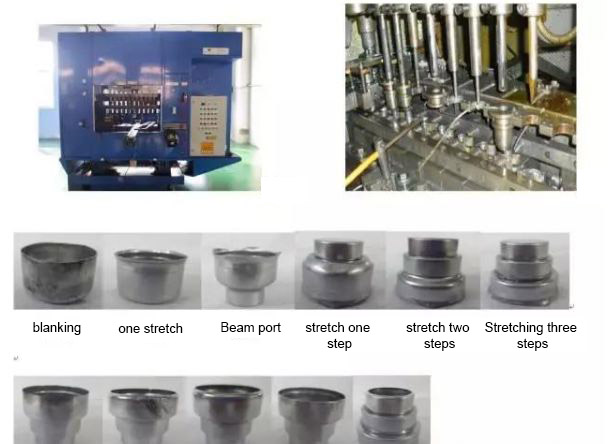
Advantages: more complex and multiple deformation products have stable dimensional control in the production process, and the product surface is smoother.
Disadvantages: high mold cost, relatively long development cycle, and high requirements for machine selection and precision.
Surface Treatment of Aluminum CNC Machining Parts
1. Sandblasting (shot peening)
The process of cleaning and roughening metal surfaces using the impact of high-speed sand flow.
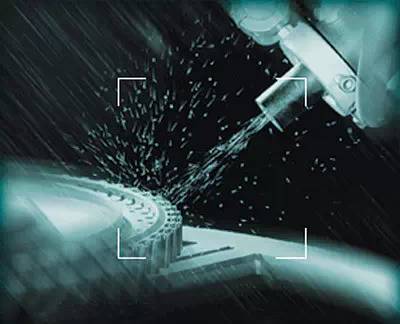
The surface treatment of aluminum CNC machining parts in this method can make the surface of the workpiece obtain a certain degree of cleanliness and different roughness, so that the mechanical properties of the surface of the workpiece are improved, thus improving the fatigue resistance of aluminum parts, increasing it and coating The adhesion between the layers prolongs the durability of the coating film and also facilitates the leveling and decoration of the paint. This process we often see in various products of Apple.
2. Polishing
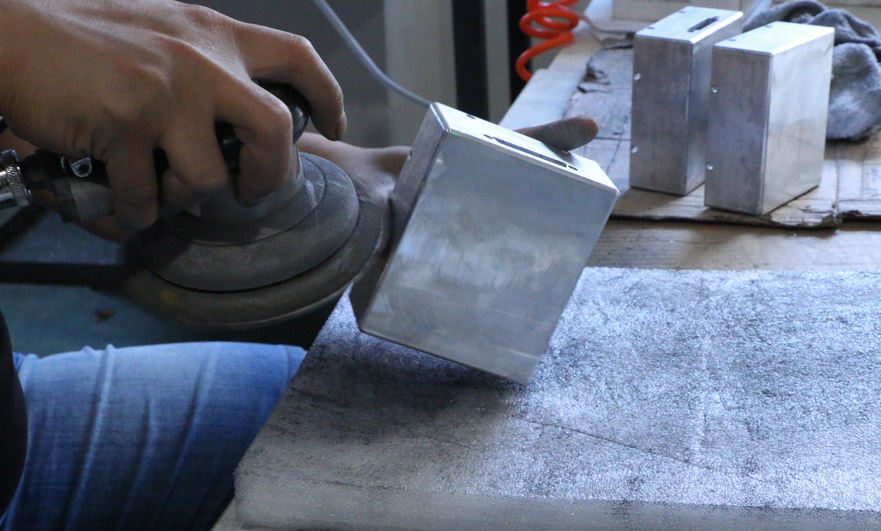
Using mechanical, chemical or electrochemical action to reduce the surface roughness of aluminum CNC machining parts to obtain a bright and smooth surface. The polishing process is mainly divided into: mechanical polishing, chemical polishing, electrolytic polishing. The aluminum CNC machining parts can be close to the stainless steel mirror effect after mechanical polishing + electrolytic polishing. This process gives people a feeling of high-end simplicity and fashionable future.
3. Drawing
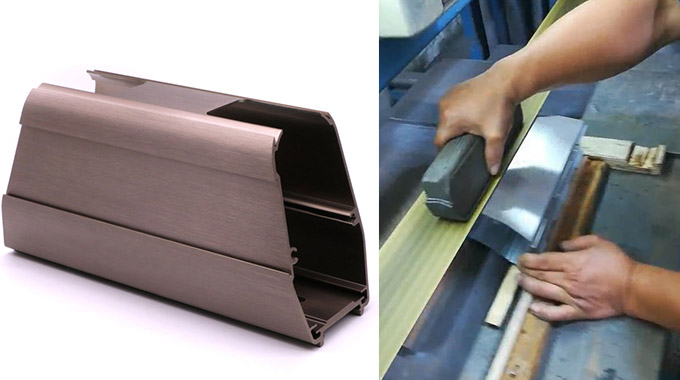
Metal wire drawing is the manufacturing process of repeatedly scraping an aluminum sheet out of lines with sandpaper. Drawing can be divided into straight drawing, random drawing, spiral drawing, thread drawing. The metal wire drawing process can clearly show every tiny silk mark, so that the fine hair luster appears in the metal matte, and the product has a sense of fashion and technology.
4. High Gloss Cutting
Using the engraving machine, the diamond knife is reinforced on the main shaft of the engraving machine rotating at a high speed (generally 20,000 rpm) to cut the parts, and a local highlight area is generated on the surface of the product. The brightness of the cutting highlights is affected by the speed of the milling drill. The faster the drill speed, the brighter the cutting highlights, and vice versa, the darker and easier to produce cutting lines. High-gloss and high-gloss cutting is particularly used in mobile phones, such as iphone5. In recent years, some high-end TV metal frames have adopted high-gloss CNC milling process. In addition, anodizing and wire drawing processes make the TV set full of fashion and technology.
5. Anodizing
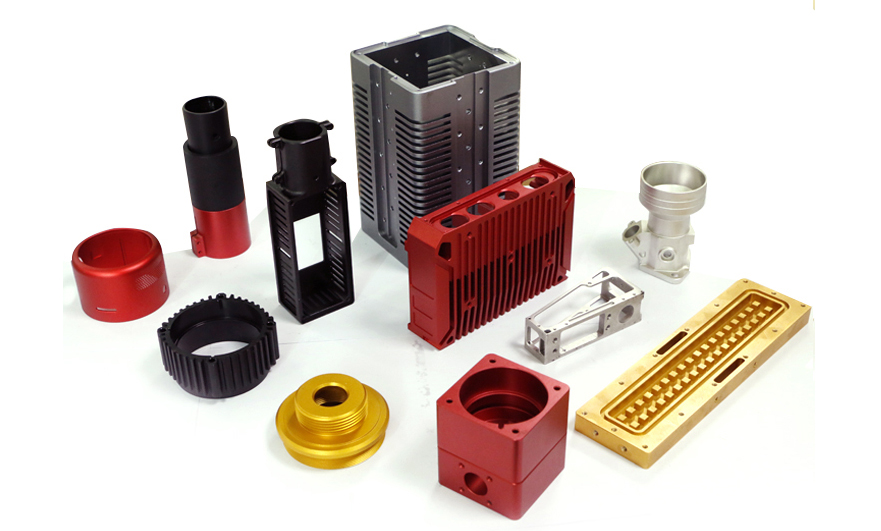
Anodic oxidation refers to the electrochemical oxidation of metals or alloys. Under the corresponding electrolyte and specific process conditions, aluminum and its alloys form an oxide film on the aluminum product (anode) due to the action of an applied current. Anodizing can not only solve the defects of surface hardness and wear resistance of aluminum CNC machining parts, but also prolong the service life of aluminum CNC machining parts and enhance the aesthetics. It has become an indispensable part of the surface treatment of aluminum CNC machining parts. It is currently the most widely used and very successful process.
6. Two-Color Anode
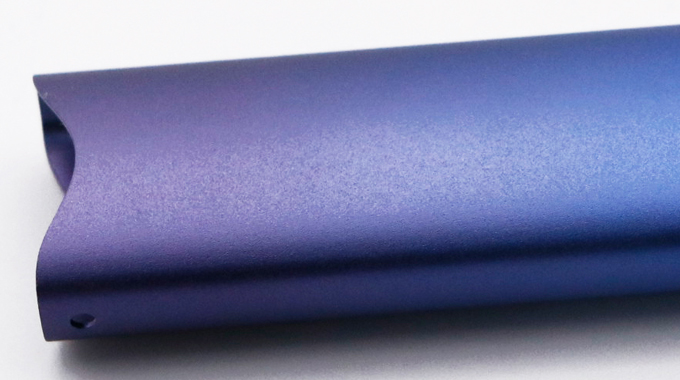
Two-color anodizing refers to anodizing on one product and imparting different colors to specific areas. The two-color anodizing process is rarely used in the TV industry, because the process is complicated and the cost is high; but the contrast between the two colors can better reflect the high-end and unique appearance of the product.
Technological Measures and Operating Skills to Reduce the Deformation of Aluminum CNC Machining Parts
There are many reasons for the deformation of aluminum parts, which are related to the material, the shape of the part, and the production conditions. There are mainly the following aspects: deformation caused by internal stress of blank, deformation caused by cutting force and cutting heat, and deformation caused by clamping force.
Technological Measures to Reduce the Deformation of Aluminum CNC Machining Parts
1. Reduce the Internal Stress of the Hair Culture
Natural or artificial aging and vibration treatment can partially eliminate the internal stress of the blank. Pre-processing is also an effective process method. For the blank with fat head and big ears, due to the large allowance, the deformation after CNC machining is also large. If the excess parts of the blank are removed by CNC machining in advance and the allowance of each part is reduced, it can not only reduce the deformation of CNC machining in subsequent processes, but also release part of the internal stress after pre- CNC machining for a period of time.
2. Improve the Cutting Ability of the Tool
The material and geometric parameters of the tool have an important influence on the cutting force and cutting heat. The correct selection of the tool is crucial to reducing the deformation of aluminum CNC machining parts.
(1) Reasonable selection of tool geometric parameters.
①Rake angle: Under the condition of maintaining the strength of the blade, the rake angle is appropriately selected to be larger, on the one hand, it can grind a sharp edge, and on the other hand, it can reduce the cutting deformation, make the chip removal smooth, and then reduce the cutting force and cutting temperature. Never use tools with negative rake angle.
②Relief angle: The size of the relief angle has a direct impact on the wear of the flank and the surface quality of CNC machining. The cutting thickness is an important condition for selecting the clearance angle. During rough milling, due to the large feed rate, heavy cutting load, and large heat generation, the tool requires good heat dissipation conditions. Therefore, the clearance angle should be selected to be smaller. When fine milling, the cutting edge is required to be sharp, the friction between the flank and the CNC machined surface is reduced, and the elastic deformation is reduced. Therefore, the clearance angle should be larger.
③ Helix angle: In order to make the milling smooth and reduce the milling force, the helix angle should be as large as possible.
④Main declination angle: Properly reducing the main declination angle can improve the heat dissipation conditions and reduce the average temperature of the processing area.
(2) Improve the tool structure.
①Reduce the number of teeth of the milling cutter and increase the chip space. Due to the large plasticity of the aluminum material and the large cutting deformation during processing, a large chip space is required, so the bottom radius of the chip groove should be large and the number of milling cutter teeth should be small.
② Finely grind the teeth. The roughness value of the cutting edge of the cutter teeth should be less than Ra=0.4um. Before using a new knife, you should use a fine oil stone to lightly sharpen the front and back of the knife teeth a few times to eliminate the burrs and slight serrations left when sharpening the teeth. In this way, not only can the cutting heat be reduced, but also the cutting deformation is relatively small.
③ Strictly control the wear standard of the tool. After the tool is worn, the surface roughness value of the workpiece increases, the cutting temperature rises, and the workpiece deformation increases. Therefore, in addition to the selection of tool materials with good wear resistance, the tool wear standard should not be greater than 0.2mm, otherwise it is easy to produce built-up edge. When cutting, the temperature of the workpiece should generally not exceed 100 ℃ to prevent deformation.
3. Improve the Clamping Method of Aluminum CNC Machining Parts
For thin-walled aluminum CNC machined parts with poor rigidity, the following clamping methods can be used to reduce deformation:
①For thin-walled bushing parts, if the three-jaw self-centering chuck or spring chuck is used for radial clamping, once it is released after CNC machining, the workpiece will inevitably deform. At this time, the method of pressing the axial end face with better rigidity should be used. The inner hole of the part is machined from aluminum for positioning, and a self-made threaded mandrel is inserted into the inner hole of the part, and the end face is pressed with a cover plate and then tightened with a nut. When machining the outer circle, clamping deformation can be avoided, so as to obtain satisfactory CNC machining accuracy.
②When CNC machining thin-walled and thin-plate workpieces, it is best to use vacuum suction cups to obtain evenly distributed clamping force, and then process with a small amount of cutting, which can well prevent the deformation of aluminum CNC machining parts.
In addition, the packing method can also be used. In order to increase the process rigidity of thin-walled workpieces, a medium can be filled inside the workpiece to reduce the deformation of the workpiece during clamping and cutting. For example, urea melt containing 3% to 6% potassium nitrate is poured into the workpiece. After CNC machining, the aluminum CNC machined parts are immersed in water or alcohol, and the filler can be dissolved and poured out.
4. Reasonable Arrangement of Processes
During high-speed cutting, due to the large CNC machining allowance and intermittent cutting, the milling process often generates vibration, which affects the CNC machining accuracy and surface roughness. Therefore, the CNC high-speed cutting process can generally be divided into: roughing-semi-finishing-corner-clearing-finishing and other processes. For parts with high precision requirements, it is sometimes necessary to perform secondary semi-finishing and then finishing. After rough machining, the parts can be cooled naturally, eliminating the internal stress caused by rough machining and reducing deformation. The allowance left after rough machining should be greater than the deformation, generally 1 to 2 mm. When finishing, the finishing surface of the parts should maintain a uniform CNC machining allowance, generally 0.2 ~ 0.5mm, so that the tool is in a stable state during the CNC machining process, which can greatly reduce the cutting deformation and obtain a good surface CNC machining Quality, to ensure the accuracy of the product.
Operation skills to reduce the deformation of aluminum CNC machining parts
In addition to the above reasons, the operation method is also very important in actual operation.
1. For parts with large CNC machining allowance, in order to make them have better heat dissipation conditions during the CNC machining process and avoid heat concentration, symmetrical machining should be adopted during CNC machining. If a 90mm thick sheet needs to be processed to 60mm, if one side is milled and the other side is milled immediately, and the final size is processed at one time, the flatness will reach 5mm; if it is processed symmetrically with repeated feeding, each side is processed twice to The final dimension can guarantee a flatness of 0.3mm.
2. If there are multiple cavities on the plate parts, it is not suitable to use the sequential processing method of one cavity and one cavity during CNC machining, which will easily cause the aluminum CNC machined parts to be unevenly stressed and deformed. Multi-layer processing is adopted, and each layer is processed to all the cavities at the same time, and then the next layer is processed to make the parts evenly stressed and reduce deformation.
3. Reduce the cutting force and cutting heat by changing the cutting amount. Among the three elements of cutting amount, the amount of back-engagement has a great influence on the cutting force. If the machining allowance is too large, the cutting force of one pass is too large, which will not only deform the aluminum CNC machined parts, but also affect the rigidity of the machine tool spindle and reduce the durability of the tool. If the amount of knives to be eaten by the back is reduced, the production efficiency will be greatly reduced. However, high-speed milling is used in CNC machining, which can overcome this problem. While reducing the amount of back cutting, as long as the feed is increased accordingly and the speed of the machine tool is increased, the cutting force can be reduced and the CNC machining efficiency can be ensured.
4. The order of knife moves should also be paid attention to. Rough machining emphasizes improving the efficiency of CNC machining and pursuing the removal rate per unit time. Generally, up-cut milling can be used. That is, the excess material on the surface of the blank is removed at the fastest speed and the shortest time, and the geometric contour required for finishing is basically formed. While finishing emphasizes high precision and high quality, it is advisable to use down milling. Because the cutting thickness of the cutter teeth gradually decreases from the maximum to zero during down milling, the degree of CNC machining hardening is greatly reduced, and the deformation degree of aluminum CNC machining parts is also reduced.
5. Thin-walled workpieces are deformed due to clamping during CNC machining, and even finishing is unavoidable. In order to reduce the deformation of the workpiece to a minimum, you can loosen the pressing piece before finishing the final size, so that the workpiece can freely return to its original state, and then slightly press it, as long as the workpiece can be clamped (completely). According to the feel), the ideal CNC machining effect can be obtained. In short, the action point of the clamping force is best on the supporting surface, and the clamping force should act in the direction of good rigidity of the workpiece. On the premise that the aluminum CNC machined parts are not loosened, the smaller the clamping force, the better.
6. When machining parts with a cavity, try not to let the milling cutter plunge directly into the part like a drill bit when machining the cavity, resulting in insufficient space for the milling cutter to accommodate chips and unsmooth chip removal, resulting in overheating, expansion and Unfavorable phenomena such as broken knife and broken knife. First drill the hole with a drill of the same size as the milling cutter or one size larger, and then mill it with the milling cutter. Alternatively, CAM software can be used to produce helical rundown programs.
